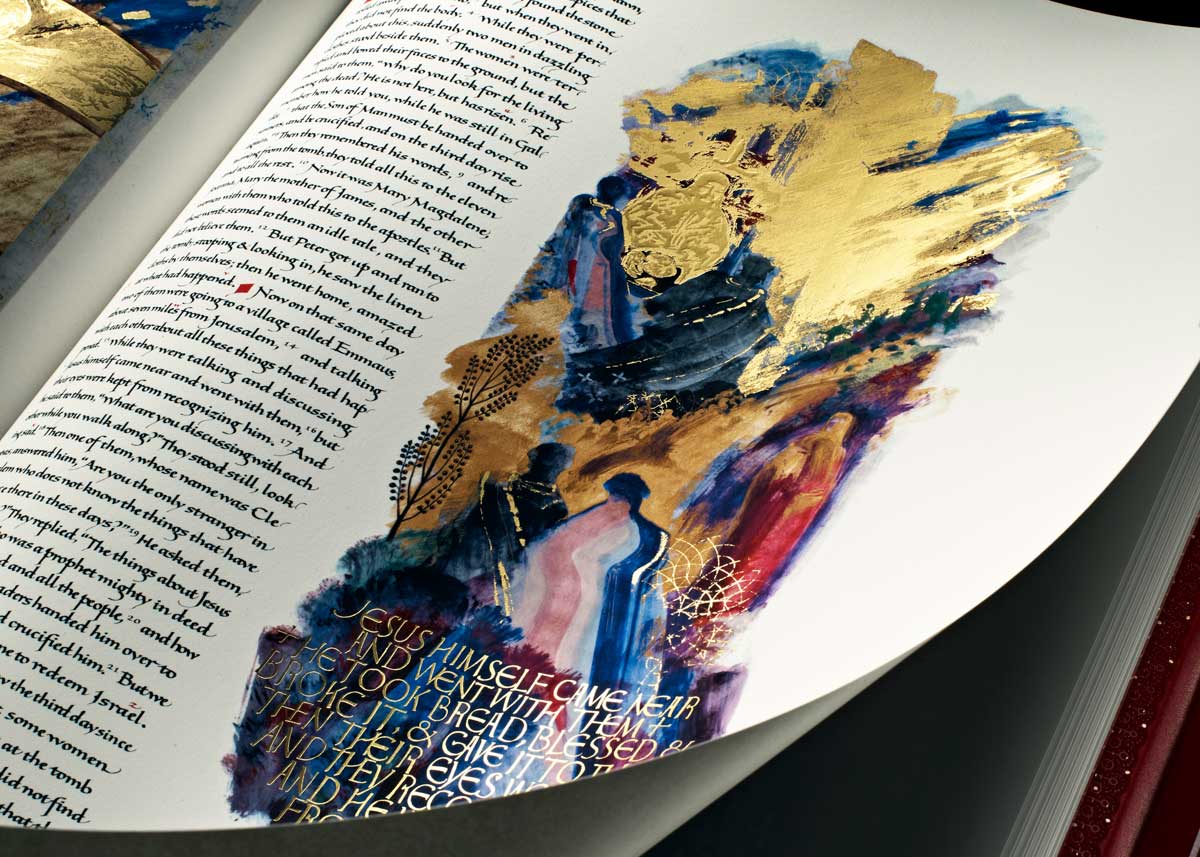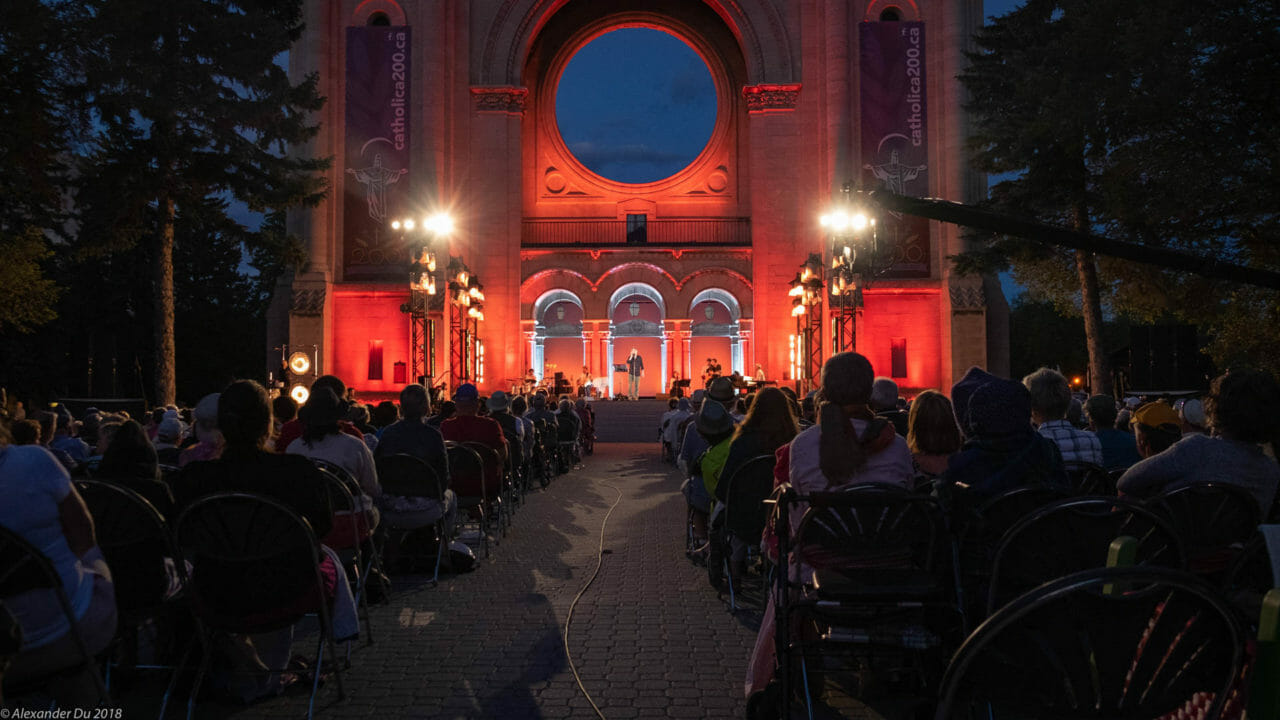How Saint Boniface Brought The Saint John’s Bible to a Bilingual Audience to Celebrate 200 Years of Canadian Ministry
A uniquely diverse community was given the chance to study the Heritage Edition in two languages
The Bible has been translated into some 1,500 languages – at least, in part. The Saint John’s Bible, however, is hand-penned in English, relying on the New Revised Standard Version translation to preserve the accuracy of the Word among various Christian denominations.
But multilingual host communities are making an extra investment to help the Heritage Edition connect with their parishioners, as was the case of the Archdiocese of Saint Boniface in Winnipeg, MB, CN.
“We have a very large diocese here geographically,” said Michelle Larose-Kuzenko, committee member at Saint Boniface and part of the team that oversaw the Archdiocese’s time with the Heritage Edition. In fact, she said, Winnipeg is the only region in the world with three archdioceses: the English-speaking Archdiocese of Winnipeg, the Ukranian Catholic Archeparchy, and the bilingual Saint Boniface, whose parishes serve English- and French-speaking parishioners.
One Word Heard in Two Languages
When it came time to plan programming for the Heritage Edition, translating key documents to French proved to be as much an opportunity as a challenge. “We needed to translate some of the documents for us to work with the parishes,” Larose-Kuzenko said. The organization utilized professional translators. Their work included collateral like presentations, promotional pamphlets and even the lectio divina and visio divina programs. The French text for the reading used in the programs came from the official translation of the Bible used in French speaking countries by the Association épiscopale liturgique pour les pays francophones (AELF).
For Larose-Kuzenko, making the Heritage Edition and its art accessible to a wider audience meant more than simply helping them understand the words – it meant helping them develop a greater appreciation for the personal journey the Heritage Edition can inspire. “I look at it from an educational point of view,” said Larose-Kuzenko, a retired teacher and self-described visual learner. “Everybody has different learning styles. For me, reading the text and looking at an illustration is a better way of experiencing, whereas some people will be very happy to just close their eyes and listen to the Word and have it spoken to them.
“Then there’s people who are physical-experiencing, so they need to actually touch the Bible and turn the pages, you know? Offering all these opportunities to the participants – to hear, to read, to touch – is a way to get to more people in how they learn and how they experience things personally.”
A Word to Reflect History
The Heritage Edition arrived in Winnipeg thanks to a collaboration led by Dr. Christopher Adams, Rector of St. Paul’s College at the University of Manitoba. Dr. Adams reached to out to Saint Boniface, the Archdiocese of Winnipeg, St. Paul’s High School, and St. Mary’s Academy. Each institution had different ways of using the Heritage Edition in their spaces, but they were all unified by a wide-ranging plan to commemorate a historic moment in Canadian liturgy.

“The purpose of having [The Saint John’s Bible] in the Archdiocese of Saint Boniface was to celebrate the arrival of the Word in Western Canada 200 years ago,” said Larose-Kuzenko. “[Archbishop Albert LeGatt] wanted the Bible to circulate as much as possible.”
Saint Boniface planned specific studies around the Road to Emmaus illumination, which depicts the story of Jesus meeting two disciples while traveling after his resurrection. The disciples, unaware of who he is, commiserate with Jesus about the death of the Messiah. The two finally recognize Jesus as he breaks bread with them, and immediately travel to Jerusalem to spread news of his return.
The total Catholic population covered by Saint Boniface is around 113,000 split among some 87 parishes and missions, said Larose-Kuzenko. As the Heritage Edition made its circuit within parishes and deaneries to celebrate 200 years of hearing the Word, it was seen by a uniquely Canadian mix of visitors. While the majority were Catholic, there were a few other Christian denominations who had opportunities to view and interact with the Bible.
“We had great participation from Catholics of Winnipeg as well as many communities in Manitoba,” Larose-Kuzenko said of the bicentennial celebrations. “In a way, it was almost a reenactment … The first missionaries brought the Bible – well, here was [The Saint John’s Bible] and it was going around in the parishes.”


